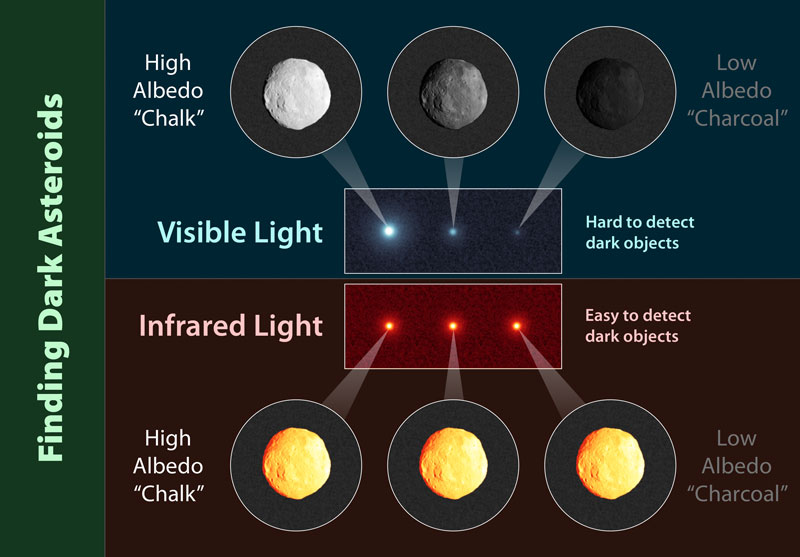



|
This chart illustrates why infrared-sensing telescopes are more suited to finding small, dark asteroids than telescopes that detect visible light. The top of the chart shows how three asteroids of the same size but differing compositions would appear in visible light. An asteroid that has a shinier surface, or higher albedo, will appear brighter than a dark asteroid, even though they are the same size. This is because a shinier asteroid will reflect more visible light from the sun. The bottom of the chart shows the same three asteroids when viewed in infrared light. They appear to be the same brightness, regardless of their albedo. Objects of the same size will radiate about the same amount of infrared light, as result of being heated by the sun. It's easier for an infrared telescope to see a small, dark asteroid because it senses the object's heat signature and not the little amounts of reflected sunlight. Image credit: NASA/JPL-Caltech |
||||||||||||||||
|
|||
